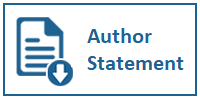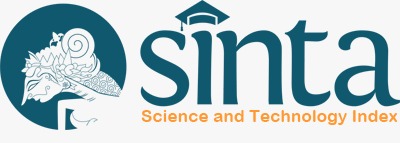Pengaruh Informasi Rasio Keuangan dan OpiniAudit Tahun Sebelumnya Terhadap Penerimaan Opini Audit Going Concern
DOI:
https://doi.org/10.31937/akuntansi.v7i2.182Abstract
This research as causal research studies conducted to establish a causal relationship between variables Quick Ratio, Loan to Deposit Ratio, Non-Performing Loans, Return on Assets, Capital Adequacy Ratio, and Prior Year Audit Opinion on the acceptance of going concern audit opinion. The object of this research is the banking companies listed in Indonesia Stock Exchange in 2008 - 2012. Samples were taken by using purposive sampling as many as 24 banking company. Criteria taken among companies that publish financial statements audited by an external auditor in the year 2008 - 2012 and has a poor financial ratios (LDR<78% and LDR> 92%, NPL>5%, ROA<1.2%, and CAR<8%) at least one time period between the years 2008-2012, in accordance with regulation of Bank Indonesia. This research use Regression logistic, because the dependent variable measured by nominal scale, therefore dummy model is used, where 1 is symbolized for a company that received going concern audit opinion, and 0 is symbolized for a company that not received going concern audit opinion. In testing the hypothesis can be seen that only the previous year's audit opinion variable which is non-financial information, have a significant influence on the acceptance of going concern audit opinion. While other variables such as Quick Ratio, Loan to Deposit Ratio, Non-Performing Loans, Return on Assets and Capital Adequacy Ratio which is a ratio of financial information, does not have a significant effect on the auditor in the provision of going concern audit opinion.
Keywords: Acceptance of Going Concern Audit Opinion, Quick Ratio, Loan to Deposit Ratio, Non-Performing Loans, Return on Assets, Capital Adequacy Ratio, Prior Year Audit Opinion.
Downloads
Downloads
Published
How to Cite
Issue
Section
License
Authors retain copyright and grant the journal right of first publication with the work simultaneously licensed under a Creative Commons Attribution-ShareAlike International License (CC-BY-SA 4.0) that allows others to share the work with an acknowledgement of the work's authorship and initial publication in this journal.
Authors are able to enter into separate, additional contractual arrangements for the non-exclusive distribution of the journal's published version of the work (e.g., post it to an institutional repository or publish it in a book), with an acknowledgement of its initial publication in this journal.















